PyCrafters™ - Python for Teens
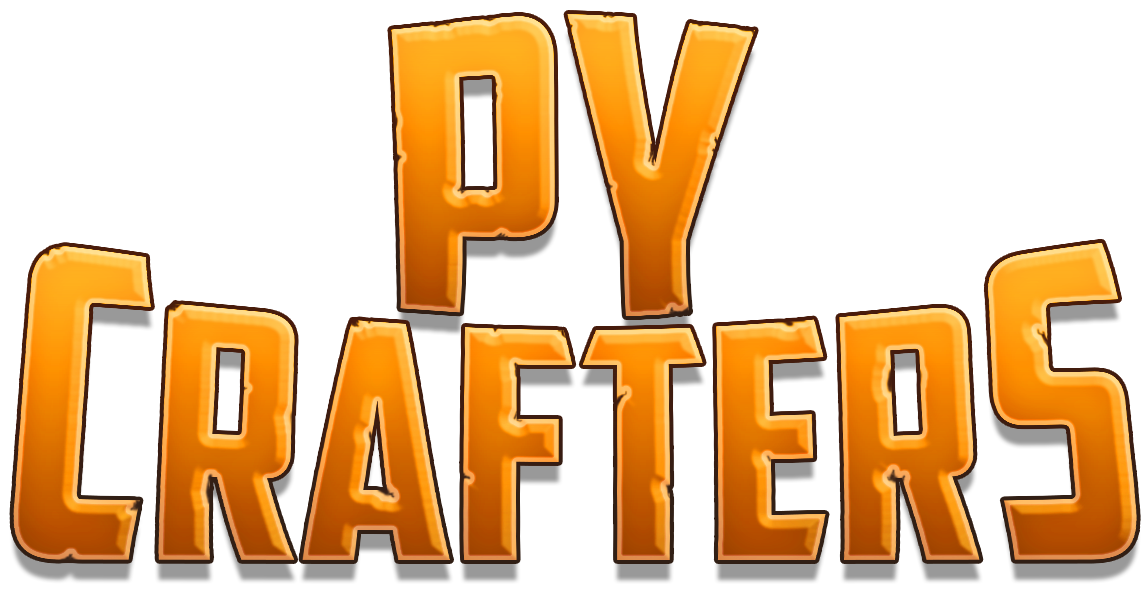
PyCrafters™ – Python for Teens is a comprehensive, standards-aligned coding course designed specifically for middle school students (grades 6–9, ages 11–14). Developed by the OpenEDG Python Institute, the course introduces students to the exciting world of computer programming and computational thinking using Python, one of the most popular and beginner-friendly programming languages.
The course is aligned to the CPALMS Coding Fundamentals CTE Standards (CTE-IT.68.9009200) for Middle School within the Information Technology Career Cluster.
Course Overview
The course is structured around four modules that gradually build skills from computing basics to advanced beginner programming:
- Module 1 introduces computers, operating systems, file management, and algorithms, laying a foundation for problem-solving and logical thinking.
- Module 2 covers the fundamentals of Python coding, including variables, decisions, loops, functions, strings, lists, dictionaries, file handling, and debugging, reinforced by a hands-on mini project.
- Module 3 engages students with visual and interactive programming using Turtle, Pygame, and VPython, allowing them to create digital art, animations, and simple games.
- Module 4 focuses on teamwork, communication, and project management as students design, build, and present a final project while preparing for a certification-style exam.
Throughout the course, students learn not only how to code, but also how to work collaboratively, plan projects using tools such as Kanban boards, document their work clearly, and present their ideas effectively.
Lesson activities are designed with two levels of proficiency:
- Explorer (ages 11–12, guided and step-by-step)
- Adventurer (ages 13–14, more abstract and independent)
to ensure that activities are developmentally appropriate and engaging for all learners.
Coding Fundamentals
Programming Track
--
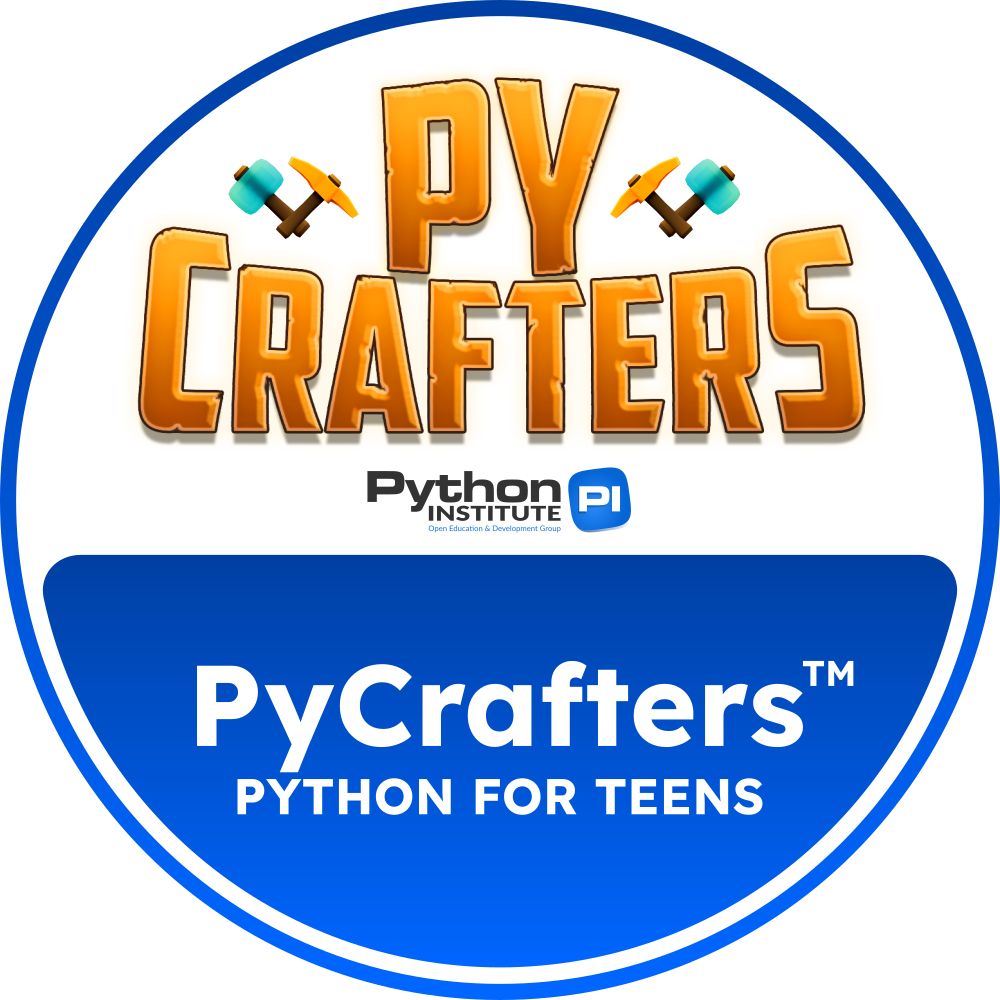

PyCrafters™ – Python for Teens
Early Beginner
20 weeks (~90 hrs)
English
PyCrafters™ – Python for Teens
(Release date: TBA)
An engaging early beginner course for ages 11–14, developed by the OpenEDG Python Institute and aligned with the Coding Fundamentals CTE Standards (CTE-IT.68.9009200) on CPALMS. Students learn core Python (variables, decisions, loops, functions, strings, lists, files) and create visual projects with Turtle, Pygame, and VPython.
Two learning paths – Explorer (guided) and Adventurer (challenge) – support different experience levels. The program includes mini projects and a final team project with Kanban planning, documentation, and presentations.
Upon completing the course and passing the in-course final exam, learners receive a Certificate of Completion from the OpenEDG Python Institute and a shareable digital badge via Credly.
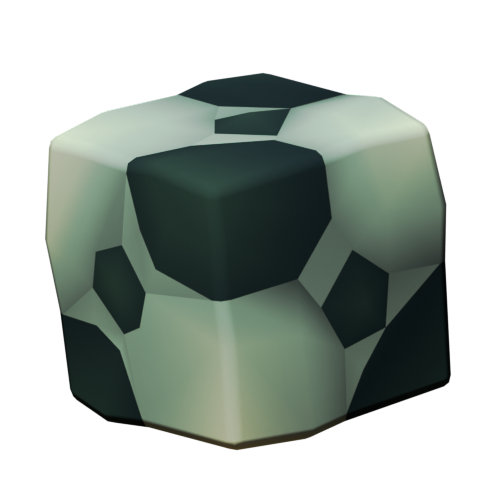
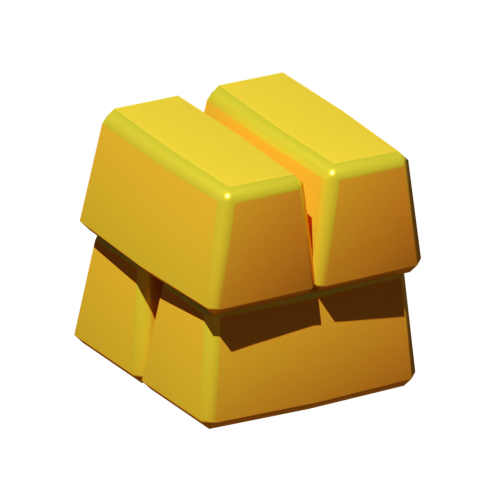
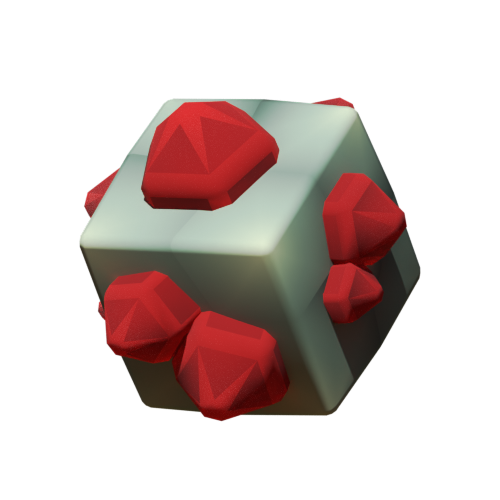
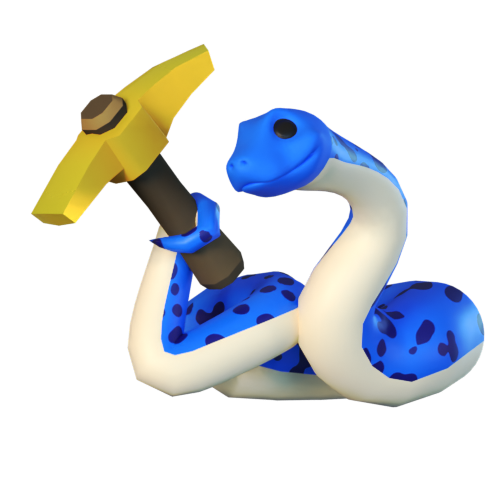
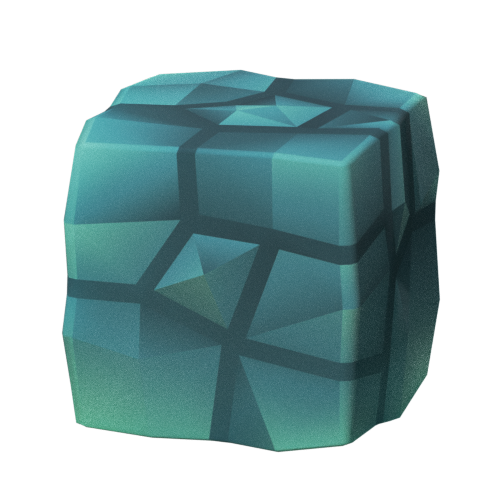

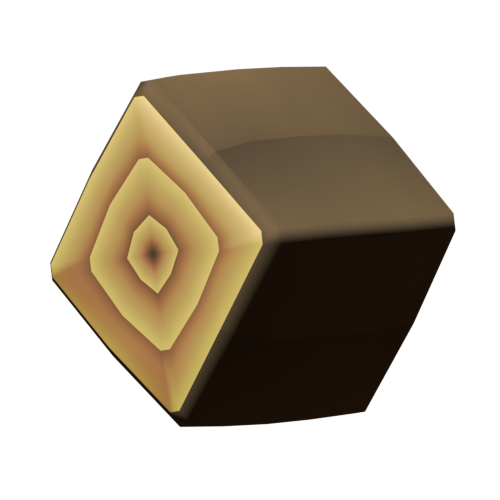
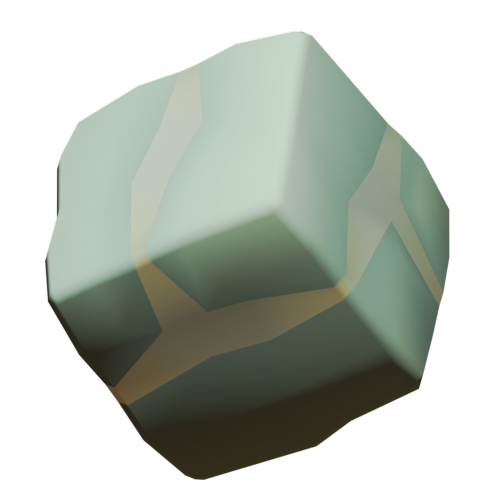








By the end of the course, students will be able to:
Explain how computers, operating systems, and common software applications support programming and problem-solving tasks.
Use Python coding software to write, test, debug, and improve simple programs, applying structured problem-solving strategies.
Apply key programming concepts including algorithms, variables, conditionals, loops, functions, strings, lists, dictionaries, and file handling.
Design and build creative projects such as games, animations, utilities, and interactive simulations using Python libraries like Turtle, Pygame, and VPython.
Develop workplace-ready skills by practicing teamwork, collaboration, project planning with tools such as Kanban boards, clear documentation, and oral and written communication.
Recognize that multiple algorithms can solve the same problem and collaboratively implement coding solutions as part of a team project.
Prerequisites
No prior coding experience is required. This course is designed for absolute beginners who are enthusiastic about technology, enjoy exploring new ideas, and are curious about how computers and programs work. Students should bring a willingness to learn step by step, practice problem-solving, and collaborate with classmates in creative projects. The course is especially suited for those who are looking to build future-ready skills that are increasingly sought after in today’s job market.
Structure & Duration
Length: ~90 hours (20 weeks)
Levels: Explorer (ages 11–12), Adventurer (ages 13–14)
Course Modules:
- Introduction to Computers and Programming (~12 hours)
- Python Fundamentals (~42 hours)
- Visual & Interactive Programming (~28 hours)
- Final Project & Exam Prep (~8 hours)
Syllabus Summary
The course is divided into four modules:
Module 1: Computers, operating systems, file management, software apps, spreadsheets, algorithms, pseudocode, programming languages, careers.
Module 2: Python basics, variables, decisions, loops, functions, strings, lists, dictionaries, files, debugging, mini project.
Module 3: Turtle graphics, Pygame 2D games, VPython 3D graphics, creative mini project.
Module 4: Final project, project management (Kanban), documentation, teamwork, presentations, exam prep.
PyCrafters™ – Python for Teens Course Syllabus
- Module 1: Introduction to Computers and Programming
- Module 2: Python Fundamentals
- Lesson 6: First Steps in Python
- Lesson 7: Numbers and Text in Python
- Lesson 8: Making Choices with If Statements
- Lesson 9: Repetition with Loops
- Lesson 10: Reusable Code – Functions and Imports
- Lesson 11: Working with Strings
- Lesson 12: Working with Lists
- Lesson 13: Storing Information with Dictionaries
- Lesson 14: Saving and Loading Data
- Lesson 15: Debugging Basics
- Lesson 16: Mini Project – Python Fundamentals
- Module 3: Visual & Interactive Programming
- Module 4: Final Project & Exam Prep
Module 1: Introduction to Computers and Programming
Duration: ~12 hours (Weeks 1–3)
Goal: Build a foundation in computing by exploring hardware, operating systems, file management, software applications, algorithms, and pseudocode. Develop basic problem-solving strategies with algorithms and pseudocode, practice organizing projects, and prepare for coding through teamwork and communication.
Lesson 1: What Is a Computer? (2 hrs)
Objective: Understand what a computer does, the role of operating systems, and how to organize files and applications.
Topics
- Hardware vs software
- The role of the operating system (Windows, macOS, Linux, Android, iOS)
- Common software apps: word processor, spreadsheet, presentation, coding IDE
- Files, folders, and extensions (.txt, .docx, .xlsx, .png, .py, etc.)
- Basic file operations (create, rename, save, delete)
- Keyboarding and shortcuts (copy/paste, open, save, etc.)
- Everyday uses of computing in school/work
Explorer Activities
- “Computer as a house” analogy (hardware = walls, OS = manager, apps = furniture)
- Match hardware parts to roles (CPU, storage, memory)
- Create SchoolProject folder and save a text file (GUI)
- Identify file icons and guess types (.docx, .png, .mp3)
- Type a short paragraph and save it
- Save a Doc and a Python file in a project folder
Adventurer Activities
- Research: Windows vs Linux similarities/differences
- Use CLI to create/list folders (
mkdir,ls/dir) - Plan a folder tree map (School > Science > Project1)
- Rename/move/delete files using OS tools
- Reflection: Why different OSes exist and when each is useful
Lesson 2: Exploring Software Applications & Data (2 hrs)
Objective: Use software applications (spreadsheets, text editors, IDEs) to process, organize, and represent information.
Topics
- Word processors, spreadsheets, presentations, coding IDEs
- Sorting, filtering, searching in spreadsheets
- Why spreadsheets/databases matter at work (finance, HR, inventory, scheduling)
- Displaying info with charts/graphs
- How programming automates tasks
Explorer Activities
- Create a class schedule in a spreadsheet
- Enter attendance and filter absent students
- Sort classmates alphabetically
- Filter favorite movies by genre
- Create a bar chart of daily screen time
Adventurer Activities
- Expense tracker (add, sort, sum)
- Graph monthly spending
- Compare spreadsheet vs coding (pros/cons)
- Save as .xlsx and .csv; open both and compare
- Weekly work hours calculator
Lesson 3: Thinking Like a Programmer: Algorithms & Problem-Solving (4 hrs)
Objective: Break down problems into algorithms and represent them with pseudocode and flowcharts.
Topics
- What is an algorithm? Everyday examples
- Multiple ways to solve the same problem
- Flowcharts and pseudocode basics
- Problem decomposition
- Links between real-world tasks and program logic
Explorer Activities
- Pseudocode: brushing teeth
- Flowchart: sandwich/cereal
- Group: two pseudocode solutions for “cross the street safely”
- Compare versions for clarity
- Type pseudocode in a text editor (keyboarding practice)
Adventurer Activities
- Pseudocode: vending machine or traffic light
- Flowchart a simple maze/decision tree
- Translate flowchart to step-by-step instructions
- Research a famous algorithm (sorting, LIFO, FIFO)
- Debate: multiple algorithms for one problem
Lesson 4: Programming Languages & Careers (2 hrs)
Objective: Explore languages, why they differ, and how coding connects to real jobs.
Topics
- Why many languages exist (design approaches, strengths)
- Python vs JavaScript/Swift/C++
- Careers: games, business, AI, web
- Teamwork and communication in coding
- Coding for workplace tasks (automation, reporting, web tools)
Explorer Activities
- Match careers to workplace applications
- Watch short demo: Python vs Scratch vs HTML
- Career match-up: “Which job uses which language?”
- Reflection: “Where could I use coding in my life?”
Adventurer Activities
- Research: pick a language and share main use
- Group brainstorm: file formats & why they exist
- Case study: Python in games/AI
- Case study: Python + spreadsheets for data processing
- Team pseudocode → short code exercise
- Present findings (short slides)
Lesson 5: Mini Project – Computing Foundations (2 hrs)
Objective: Apply knowledge of computers, OS, software apps, algorithms, and languages to design a small project; organize files; create pseudocode/flowcharts; present.
Topics
- Project folder structure
- Using apps to support development
- Pseudocode and flowcharts for a scenario
- Multiple algorithms for the same problem
- Clear, concise presentations
Explorer Activities
- Checklist to track project steps
- Create folder with subfolders (Docs, Data, Code, Images); save one file in each
- Pairs: flowchart a real-life process
- Write pseudocode; compare with another team
- 2–4 slides (flowchart + pseudocode); 2-minute presentation
Adventurer Activities
- Use a shared doc/sheet as a task tracker
- Scenario (vending/traffic/library): pseudocode + flowchart
- Spreadsheet model of part of the process
- Structured project folder and naming
- Short README (idea, roles, algorithm choices)
- 2-minute slideshow (overview, pseudocode, flowchart, file example)
Module 2: Python Fundamentals
Duration: ~42 hours (Weeks 4–12)
Goal: Learn Python basics (variables, operators, conditionals, loops, functions, strings, lists, dictionaries, files, debugging). Practice writing small programs and complete a fundamentals mini project.
Lesson 6: First Steps in Python (3 hrs)
Objective: Write and run your first program; connect algorithms to code; understand simple program structure and data storage.
Topics
- IDE options (Edube Sandbox, Thonny, IDLE, online REPL)
print("Hello, World!")- Comments (
#) - Variables = storage boxes
print()andinput()- Program sequence
- Saving a
.pyfile
Explorer Activities
- Run Hello, World!
- Greet three friends
- Ask for name, print welcome
- Add comments to explain each line
- Pseudocode “introduce yourself” → code
- Debug: misspell
printand read error - Run a saved
.pyfile
Adventurer Activities
- Pseudocode first, then implement
- Store answers in variables; format output
- Three-question survey via
input() - Pair: one writes pseudocode, one codes
- Debug a broken “Hello, World!”
Lesson 7: Numbers and Text in Python (4 hrs)
Objective: Perform calculations; combine text and numbers; convert types; debug type errors.
Topics
- Types:
int,float,str,bool - Type conversion:
int(),float(),str() - Operators: +, −, *, /, //, %, **
- Operator precedence (PEMDAS)
- Mixing strings and numbers
- Common type errors
Explorer Activities
- Birthday program: “Next year you will be …”
- Sum and product of two numbers
- Name Repeater (×5)
- Pet sentence generator
- Debug:
int("hello")
Adventurer Activities
- Tip Calculator (split bill)
- Rectangle area & perimeter
- Mini Math Quiz (random additions)
- Debug wrong type conversions
Lesson 8: Making Choices with If Statements (6 hrs)
Objective: Use conditions and branching to handle different outcomes.
Topics
- Booleans
- Comparisons (==, <, >, >=, <=, !=)
if,elif,else- Nested conditionals
Explorer Activities
- Umbrella program (raining?)
- Pass/Fail quiz (≥ 50)
- Even/Odd checker
- Compare two numbers
- Favorite color response
Adventurer Activities
- Rock–Paper–Scissors (2-player)
- Leap Year checker
- Discount calculator (> 100)
- Three-question quiz grader
- Debug nested
iferrors
Lesson 9: Repetition with Loops (6 hrs)
Objective: Repeat actions automatically using for and while; control loops safely.
Topics
forwithrange()whileloopsbreak,continue- Infinite loop debugging
Explorer Activities
- Print 1–20
- Multiplication table (1–5)
- Countdown 10 → 1
- Ask until “stop”
- All even numbers up to 20
Adventurer Activities
- Number Guessing Game (1–10)
- ASCII triangle with *
- Password retry (3 attempts)
- Prime number checker
- Use
time.sleep() - Debug an infinite loop
Lesson 10: Reusable Code – Functions and Imports (5 hrs)
Objective: Write reusable code with functions; pass inputs/returns; import and use Python libraries (math, random, time, this).
Topics
- Define with
def; call functions - Parameters and arguments
- Scope basics
- Return values
- Built-in vs custom functions
- Importing libraries; using
math,random,time,this - Examples:
math.sqrt(),math.pi,random.randint(),random.choice(),time.sleep()
Explorer Activities
greet(name)→ “Hello, name!”- Square function (return)
- Rectangle area function
- Reuse function with different inputs
- Use
math.sqrt()on user input - Dice roll with
random.randint(1, 6)
Adventurer Activities
- Function library: max of three; dice roller
- Even/Odd returns True/False
- Reverse string function
- Modular calculator (add/sub/mul/div)
- Circle area with
math.pi - Random picker with
random.choice() - Debug functions (missing
return, indentation) - Import
this: discuss the Zen of Python
Lesson 11: Working with Strings (3 hrs)
Objective: Access characters, slice substrings, and apply string methods to transform/analyze text.
Topics
- Strings as sequences
- Indexing (positive/negative)
- Slicing (
word[0:3],word[-2:]) - Methods:
.upper(),.lower(),.replace(),.find(),.count() - Concatenation and repetition
len(); iterating withfor
Explorer Activities
- First/last letter of a name
- Slice first three chars
- Count chars with
len() - Uppercase/lowercase a sentence
- Replace a word in a sentence
- Loop letters on new lines
- Debug: out-of-range index
Adventurer Activities
- Palindrome checker
- Word scrambler (slicing)
- Search in sentence with
.find() - Frequency counter (chosen letter)
- Mini project: words, letters, longest word
Lesson 12: Working with Lists (3 hrs)
Objective: Store/manage multiple items; add/remove; sort/reverse; loop through lists.
Topics
- Create lists with
[] append(),remove()- Sort and reverse
- Iterate with
for
Explorer Activities
- Favorite foods list; print each
- Add/remove one item
- Sort names alphabetically
- Count items with
len()
Adventurer Activities
- Average Grade Calculator
- Weekly Expenses Tracker
- Search for an item (user input)
- Shuffle items with
random.shuffle
Lesson 13: Storing Information with Dictionaries (4 hrs)
Objective: Use key–value pairs; add/update/retrieve values; iterate through items.
Topics
- Create dictionaries with
{} - Access by key
- Update/add key–value pairs
- Iterate keys/values/items
Explorer Activities
- Mini Phonebook (friend → phone)
- Countries → capitals
- Update favorite color
- Print all keys & values
- Lookup a user-input key
Adventurer Activities
- Word Counter (sentence → counts)
- Mini Diary (date → note)
- Student Grades (average)
- Inventory Tracker (item → qty)
- Merge two dictionaries
- Handle
KeyErrorwith.get()
Lesson 14: Saving and Loading Data (2 hrs)
Objective: Save output to a file and read it back; understand file types (.txt vs .csv).
Topics
.txtvs.csvwith open()for writing/reading- Write text to files
- Read file contents
Explorer Activities
- Save “About Me” to a text file
- Save favorite foods to a file
- Open file and print contents
- Debug: open a non-existent file
Adventurer Activities
- Expense Tracker with save/reload
- Append to a simple log file
- Read CSV-style text; compute average
- Error handling for safe open
Lesson 15: Debugging Basics (2 hrs)
Objective: Identify and fix common coding mistakes; use error messages and simple exception handling.
Topics
- Error types: syntax, runtime, logic
- Reading error messages
- Systematic debugging (prints, tracing values)
- Simple
try/except
Explorer Activities
- Fix three short buggy programs
- Handle divide-by-zero
- Catch input type error
- Trace with print statements
Adventurer Activities
- Handle multiple errors (
ValueError,ZeroDivisionError) - Debug nested conditionals
- Robust calculator with input checks
- Peer Debugging Challenge (swap code)
- Login system with error catching
Lesson 16: Mini Project – Python Fundamentals (4 hrs)
Objective: Build a small project combining variables, decisions, loops, functions, strings, collections, file I/O, and debugging; practice planning, teamwork, and presentations.
Topics
- Project idea (game, utility, creative app)
- Pseudocode/flowchart
- Basic project management (tasks/roles/Kanban)
- Use variables/loops/conditionals/functions together
- Save/read files
- Debug and test
- Present results clearly
Explorer Activities
- Choose a menu project: Diary, Quiz (5 Qs), Expense Tracker, Secret Messages
- Pairs: one writes pseudocode, one codes
- Add comments to explain steps
- Use printed/online Kanban (“To Do / Doing / Done”)
- 2–3 minute demo
Adventurer Activities
- Propose own idea or choose: Multi-level Quiz (leaderboard), Grades Manager, Inventory Tracker, Text Analyzer
- Pseudocode & flowchart plan
- Modularize with functions
- Team debug (peer review)
- Short README (what it does, how to use)
- 5-minute presentation (features + one bug fixed)
Module 3: Visual & Interactive Programming
Duration: ~28 hours (Weeks 13–18)
Goal: Use Turtle, Pygame, and VPython to create visual programs, drawings, animations, and simple games; apply concepts in creative, interactive projects.
Lesson 17: Turtle Graphics – Drawing Basics (4 hrs)
Objective: Use Turtle to draw simple shapes and text; learn coordinates, colors, and movement.
Topics
- Importing and aliasing;
import turtle as t - Movement (forward/back/left/right)
- Shapes (line, square, triangle, circle)
- Pen color/size
- Coordinates and positioning
Explorer Activities
- Row of five circles
- Triangle, square, pentagon
- Change pen color/size
penup()/pendown()positioning- Write text
- Smiley face with circles
Adventurer Activities
- House (square + triangle)
- Sun with rays
- Traffic light (three stacked circles)
- Flower with a loop
- Debug closing shape issues
Lesson 18: Turtle Graphics – Patterns & Functions (4 hrs)
Objective: Create complex drawings via loops and reusable functions; experiment with fills and patterns.
Topics
forloops for repetition- Functions for modular drawings
- Fills, pen size,
penup()/pendown() - Repeating patterns
Explorer Activities
- Five stars in a row
- Hexagon flower pattern
- Experiment with pens and colors
- Fill a shape with color
- Reuse a star-drawing function
Adventurer Activities
- Mandala/spirograph
- Snowflake pattern
- Recursive fractal tree (guided)
- Simple line maze
- Challenge: final digital artwork with functions
Lesson 19: Intro to Pygame – Drawing & Windows (4 hrs)
Objective: Explore 2D graphics with Pygame; create windows, shapes, text; learn refresh loops.
Topics
- Set up a window
- Draw shapes (circle, rectangle, polygon)
- Colors/background
- Update display in a loop
- Handle quit event
Explorer Activities
- Open window with set dimensions
- Red circle center
- Blue background
- Rectangle + triangle
- Add text
Adventurer Activities
- Random circles each run
- Auto-moving circle
- Checkerboard pattern
- Background color changes every frame
- Debug immediate crash
Lesson 20: Pygame – Adding Movement (4 hrs)
Objective: Make graphics interactive with keyboard/mouse; add basic sounds and boundaries.
Topics
- Event handling
- Keyboard movement
- Mouse-click events
- Sounds
- Screen boundaries
Explorer Activities
- Move a square with arrow keys
- Change color while moving
- Stop at edges
- Play a sound on key press
- Draw a circle on mouse click
Adventurer Activities
- Ball bouncing with paddle
- Sprite follows mouse
- Background image
- Collision sound
- Debug input lag/stuck key
Lesson 21: Pygame – Building a Simple Game (4 hrs)
Objective: Combine movement, collisions, and scoring to make a basic game; practice game loop logic.
Topics
- Collision detection
- Game loop structure
- Scores and lives
- Game over and restart
Explorer Activities
- Falling object from top
- Paddle catches object
- Score counter
- “Game Over” message
- Restart on key press
Adventurer Activities
- Multiple falling objects
- Lives counter (3 misses)
- Levels: speed increases with score
- Leaderboard at end
- Debug collision issues
Lesson 22: VPython – 3D Graphics (4 hrs)
Objective: Visualize and animate 3D objects; build simple scientific models.
Topics
- Setup VPython
- 3D shapes (sphere, box, cylinder)
- 3D positioning
- Animation loops
- Simple models (solar system, pendulum)
Explorer Activities
- Display a 3D sphere
- Add a cylinder pillar
- Bouncing ball animation
- Rotate a cube
- Change background color
Adventurer Activities
- Earth orbits the Sun
- Moon orbits Earth
- Bouncing ball with gravity
- Pendulum swing simulation
- Debug wrong-direction movement
Lesson 23: Mini Project – Visual Creation (4 hrs)
Objective: Use Turtle, Pygame, or VPython to design a creative project; plan, code, debug, and present.
Topics
- Choose project type (art, animation, game, simulation)
- Break down steps
- Use functions/loops for structure
- Debug visual programs
- Present to peers
Explorer Activities
- Turtle postcard (house, tree, sun)
- Turtle repeating pattern/mandala
- Pygame catching game
- VPython bouncing ball
- Partner demo: explain how it works
Adventurer Activities
- Turtle skyline or flower garden with loops
- Pygame game with scoring/levels
- VPython mini solar system (Earth + Moon)
- Enhancements: sound, multiple objects, scoreboard
- Class presentation: concept, challenges, debugging
Module 4: Final Project & Exam Prep
Duration: ~8 hours (Weeks 19–20)
Goal: Plan, build, and present a final project demonstrating coding skills, teamwork, communication, and documentation; review for the certification-style exam.
Lesson 24: Final Project Development (4 hrs)
Objective: Plan, design, and begin building a final project that demonstrates coding knowledge, teamwork, and communication.
Topics
- Brainstorm ideas (game, simulation, art, utility)
- Pseudocode and flowcharts
- Project management tools (task lists, shared docs, Kanban boards)
- Team roles (designer, coder, tester, presenter)
- Documentation and comments
Explorer Activities
- Brainstorm in small groups (teacher menu)
- Write pseudocode for chosen project
- Set up a digital Kanban board; update progress
- Create a team task list
- Code one feature as a team
- Document with simple comments
- Short oral progress update
Adventurer Activities
- Define a bigger project (multi-level game/tool/3D sim)
- Use Google Docs or whiteboard Kanban
- Collaborative pseudocode & flowchart for core features
- Assign roles (dev/test/docs)
- Build core modules with functions/loops
- Write a README (purpose, usage, team)
Lesson 25: Exam Prep & Presentations (3 hrs)
Objective: Review key concepts; practice debugging; present final projects with clear communication and reflection.
Topics
- Review: variables, conditionals, loops, functions, strings, lists, dicts, files
- Debugging practice (broken programs)
- Presentation prep (oral + visual)
- Peer evaluation and feedback
- Online communication etiquette
Explorer Activities
- Quick review quiz (10 items)
- Debug three short programs
- 2-minute final project demo
- Reflection paragraph (what I learned)
- Peer feedback: one glow, one grow
Adventurer Activities
- Advanced review quiz (buggy snippets)
- Debug a broken Pygame or Turtle program
- 5-minute presentation (design, challenges, solutions)
- Post code + docs to shared space (Drive, GitHub Classroom, LMS)
- Reflection report (what went well, what to improve)
Lesson 26: PyCrafters™ Final Exam (45 min)
Objective: Demonstrate mastery of the course content by completing a proctored, certification-style exam.
Exam Details
- Duration: 45 minutes
- Format: 32 exam items (single-select, multiple-select, interactive and short coding tasks)
- Content coverage: all major topics from Modules 1–4 (computers & OS, Python fundamentals, visual/interactive programming, problem-solving, debugging, and teamwork)
- Achievement levels: Explorer Level – pass with a score between 70–85%, and Adventurer Level – pass with a score between 86–100%
Students who successfully pass the exam will receive a digital certificate and badge via Credly, recognizing their achievement in Python fundamentals and creative coding.
Alignment with CTE Standards
This course is fully aligned with the Coding Fundamentals CTE Standards (CTE-IT.68.9009200 – CIP: 0511020109, Short Program: 9009200, Career Cluster: Information Technology) as published on CPALMS by Florida State University. Lessons and activities directly address objectives such as problem-solving with algorithms, using specialized coding software, developing proficiency with operating systems and applications, practicing teamwork and communication, and building real projects with Python. A detailed, lesson-by-lesson alignment to the CTE standards is provided in the course documentation.
Download Alignment to CTE Standards in PDFCredential Award
Students who complete the course and successfully pass the final in-course exam will be awarded the PyCrafters™ – Python for Teens Certificate of Completion issued by the OpenEDG Python Institute. In addition, they will receive a digital badge via Credly, which can be shared on social media, added to digital portfolios, or included in resumes and school applications as proof of achievement in coding fundamentals.
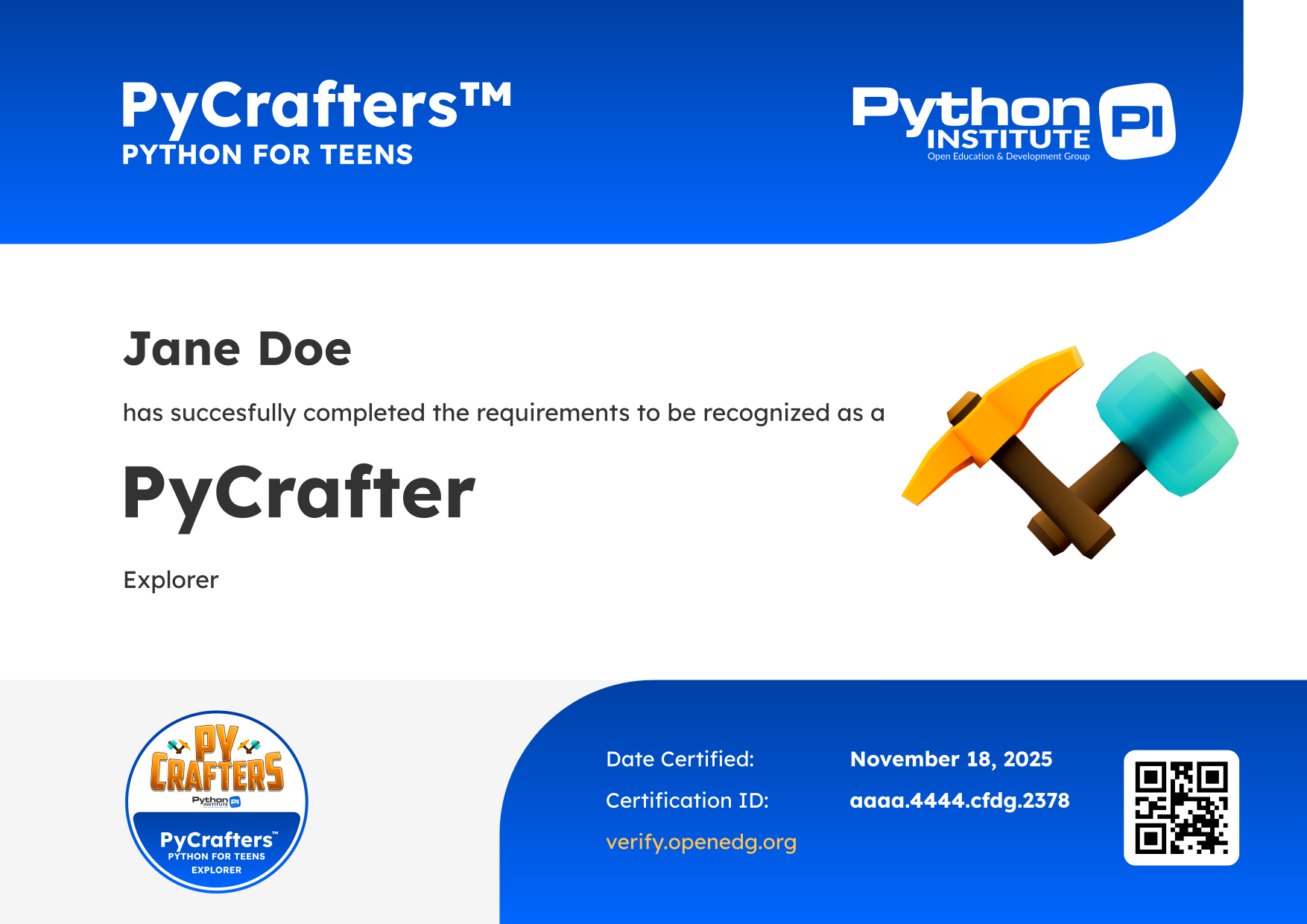
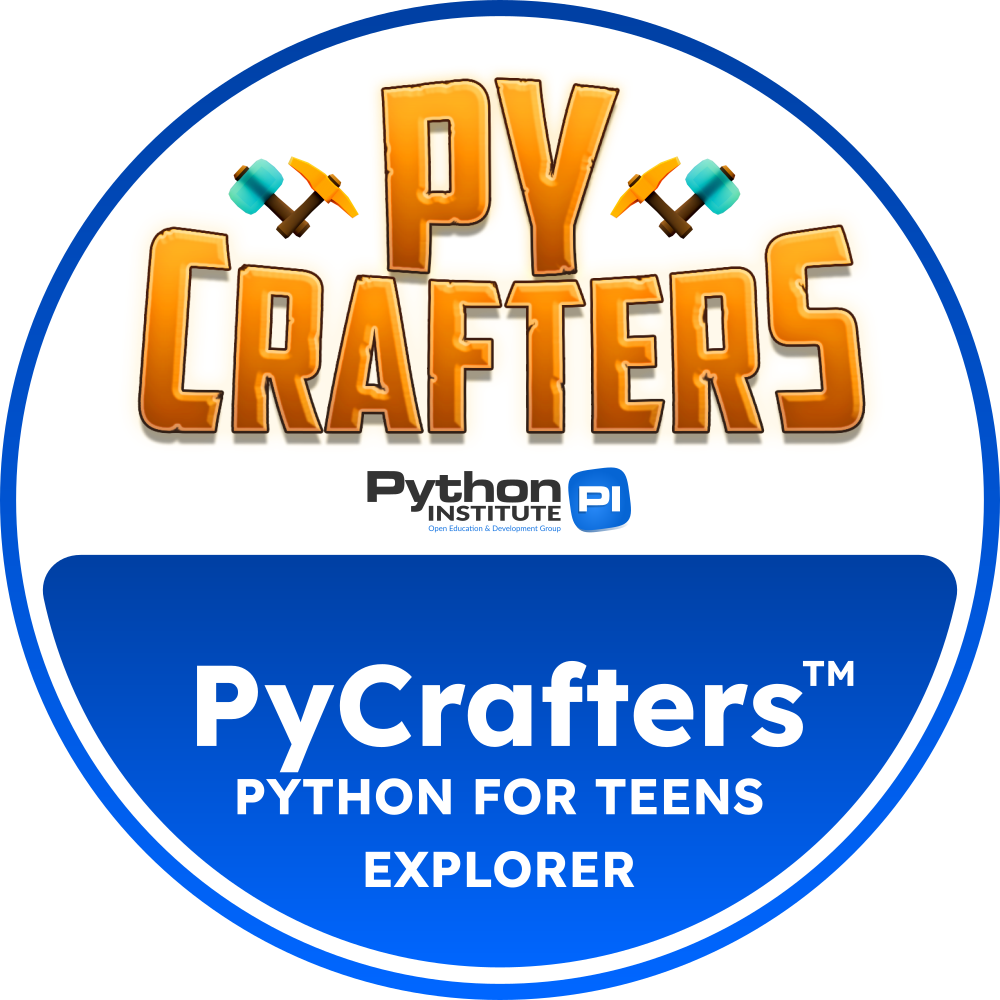
PyCrafters™ Final Exam Blueprint
| SPECIFICATIONS ITEM | DESCRIPTION |
|---|---|
| Exam name | PyCrafters™ Final Exam – Python for Teens |
| Validity | Lifetime |
| Exam Duration | Exam: 45 minutes |
| Number of Items | 32 |
| Format | Single- and multiple-select questions, interactive and short coding tasks |
| Scoring | Each item = max 10 points (total = 320 points) |
| Passing Levels | Explorer Certificate – score between 70% and 85%
Adventurer Certificate – score between 86% and 100% |
| Credential Awarded | OpenEDG Python Institute Certificate
Digital Badge via Credly |
| Exam Delivery Channel | OpenEDG Testing Service (TestNow™) |
Exam Domains
The PyCrafters™ Exam is organized into four domains that reflect the core knowledge and skills developed throughout the course. Each domain contains a set of exam objectives that specify what students are expected to know and demonstrate.
Domain 1 focuses on foundational computer concepts, operating systems, file management, and pseudocode. Domain 2 emphasizes Python fundamentals, including program structure, variables, data types, conditionals, loops, functions, libraries, and error handling. Domain 3 highlights visual and interactive programming with Turtle, Pygame, and VPython, applying Python concepts to creative projects and games. Domain 4 assesses teamwork, project planning, documentation, and communication. Each exam item is mapped to one or more objectives, ensuring that all critical skills are evaluated.
- Domain 1: Introduction to Computers & Programming
- Domain 2: Python Fundamentals
- Domain 3: Visual & Interactive Programming
- Domain 4: Projects, Teamwork, & Communication
Domain 1: Introduction to Computers & Programming
5 exam items → 50 points (15.6% of total exam)
Objectives
- 1.1 Differentiate hardware and software.
- 1.2 Explain OS roles (Windows, macOS, Linux, Android, iOS).
- 1.3 Organize files/folders and recognize file types and extensions.
- 1.4 Compare common software applications (word processor, spreadsheet, presentation, IDE).
- 1.5 Represent processes using pseudocode and flowcharts.
Domain 2: Python Fundamentals
14 exam items → 140 points (43.8% of total exam)
Objectives
- 2.1 Write, run, and save Python programs; describe simple program structure.
- 2.2 Use variables and comments; perform console input/output.
- 2.3 Manage data types (int, float, str, bool) and type conversions.
- 2.4 Apply arithmetic operators and operator precedence.
- 2.5 Implement selection structures with if/elif/else.
- 2.6 Implement iterative structures with for/while; use break and continue.
- 2.7 Define and call functions with parameters and return values; understand scope.
- 2.8 Import and use standard libraries (e.g., math, random, time; “Zen of Python” awareness).
- 2.9 Manipulate strings, lists, and dictionaries using common methods.
- 2.10 Read from and write to files (.txt, .csv) using context managers; handle basic errors.
Domain 3: Visual & Interactive Programming
8 exam items → 80 points (25% of total exam)
Objectives
- 3.1 Use Turtle to draw shapes and patterns; apply colors, coordinates, and pen controls.
- 3.2 Reuse code in graphics via loops and functions to build modular drawings.
- 3.3 Create Pygame windows; draw shapes and text; manage the refresh loop and quit event.
- 3.4 Handle keyboard/mouse input in Pygame; move sprites; enforce boundaries; play simple sounds.
- 3.5 Implement basic collision detection, scoring, game over, and restart logic.
- 3.6 Visualize and animate simple 3D objects and motions using VPython.
Domain 4: Projects, Teamwork, & Communication
5 exam items → 50 points (15.6% of total exam)
Objectives
- 4.1 Plan programs using pseudocode and flowcharts; break problems into steps.
- 4.2 Collaborate effectively in teams (roles, peer review, respectful communication).
- 4.3 Use basic project management tools (task lists, Kanban boards) to track progress.
- 4.4 Document programs with comments and concise README files.
- 4.5 Present projects clearly with appropriate visuals and explanations.
Exam Policies
The PyCrafters™ Final Exam is designed to fairly and securely assess each student’s mastery of the course content. The policies below outline important rules and procedures for all candidates.
PyCrafters™ Exam Policies
The exam is delivered securely online through the TestNow™ platform, supporting AI-proctored, teacher-proctored, or hybrid supervision models.
Scoring & Achievement Levels
- Each exam item is worth a maximum of 10 points.
- Total exam: 32 items → 320 points.
- Explorer Level: 70%–85% (224–272 points).
- Adventurer Level: 86%–100% (273–320 points).
- Scores below 70% are not considered passing.
Retake Policy
- If a student does not pass on the first attempt, a retake is allowed after a 7-day waiting period.
- Another attempt may be permitted with teacher approval after additional study or practice assignments.
Exam Expiration
- The final exam must be attempted before the end of the course schedule.
- Certificates and badges remain valid as evidence of achievement; no expiration applies.
Identification & Security
- Students must confirm their identity at the start of the exam using school ID or teacher verification.
- The exam is delivered via TestNow™, an OpenEDG Testing Service, to prevent unauthorized access.
- Exams may be AI-proctored, teacher-proctored, or hybrid to ensure fairness and maintain exam integrity.
ADA Compliance
- The exam follows ADA and accessibility guidelines and is designed in alignment with WCAG 2.1 standards to ensure usability for all learners.
- Accommodations (extended time, alternative formats) are available upon request and approval by the instructor or school administration. Please submit requests using the Accommodation of Disabilities form.
Score Invalidation
- Scores may be invalidated if exam rules are violated (e.g., cheating, unauthorized materials, disruptive behavior).
- In such cases, the student may lose the right to retake without teacher or administrator approval.
Testing Environment and Exam Session Security
Test candidates should take exams in a quiet, well-lighted area, which is free from noise and distraction.
Code of Conduct
The following Code of Honor and rules for taking the exam must be respected throughout and after the exam session:
- The test candidate must work entirely alone on the test, and all the solutions submitted must be their own work.
- The test candidate must not share their solutions or any information about the exam contents with anyone.
- The test candidate must not use a false identity or take the test in somebody else’s name.
- The test candidate must not engage in any unfair activities that may dishonestly improve their results or influence somebody else’s results.
Prohibited Behaviors During and After the Exam Session
The test candidate declares they will not participate in any cheating incident, breach of security, or any other behavior that may be considered a compromise of the integrity or confidentiality of the exam. Prohibited behaviors include (but are not limited to):
- Copying, publishing, selling, offering to sell, distributing, modifying, reverse engineering, decompiling, disassembling, or translating any exam or exam content.
- Disseminating the actual exam content by any means (e.g., web postings or reconstruction through memorization).
- Using a falsified identity, or providing falsified information or documentation; soliciting a third party to take a test on the candidate’s behalf.
- Using falsified or modified certificates/score reports to misrepresent certification status.
- Seeking or obtaining unauthorized access to exam materials before, during, or after the exam; using brain dump materials or unauthorized publications of exam items.
- Using or accessing notes, study materials, didactic aids, or any other examination aids during the exam session.
- Exiting the exam session Full Screen mode or the exam interface; opening new tabs or windows, or clicking outside the exam interface.
- Using more than one monitor/screen during the exam session.
- Causing intentional Internet connection drops.
- Causing a disturbance of any kind in a testing facility (proctored exams).
- Making notes of any kind or using recording devices during the exam.
- Tampering with the operation of testing facility equipment (proctored exams) or attempting to hack the OpenEDG Testing Service system.
- Violating the Exam Policy or Exam Retake Policy.
- Otherwise violating the Exam Terms and Conditions or NDA.
PyCrafters™ Exam Candidate Guide
The PyCrafters™ Exam is the final assessment for the PyCrafters™ – Python for Teens course. It validates the student’s knowledge of computing foundations, Python programming basics, and creative coding projects. This Candidate Guide explains exam logistics, policies, accommodations, and certification outcomes.
Download Candidate Guide in PDF